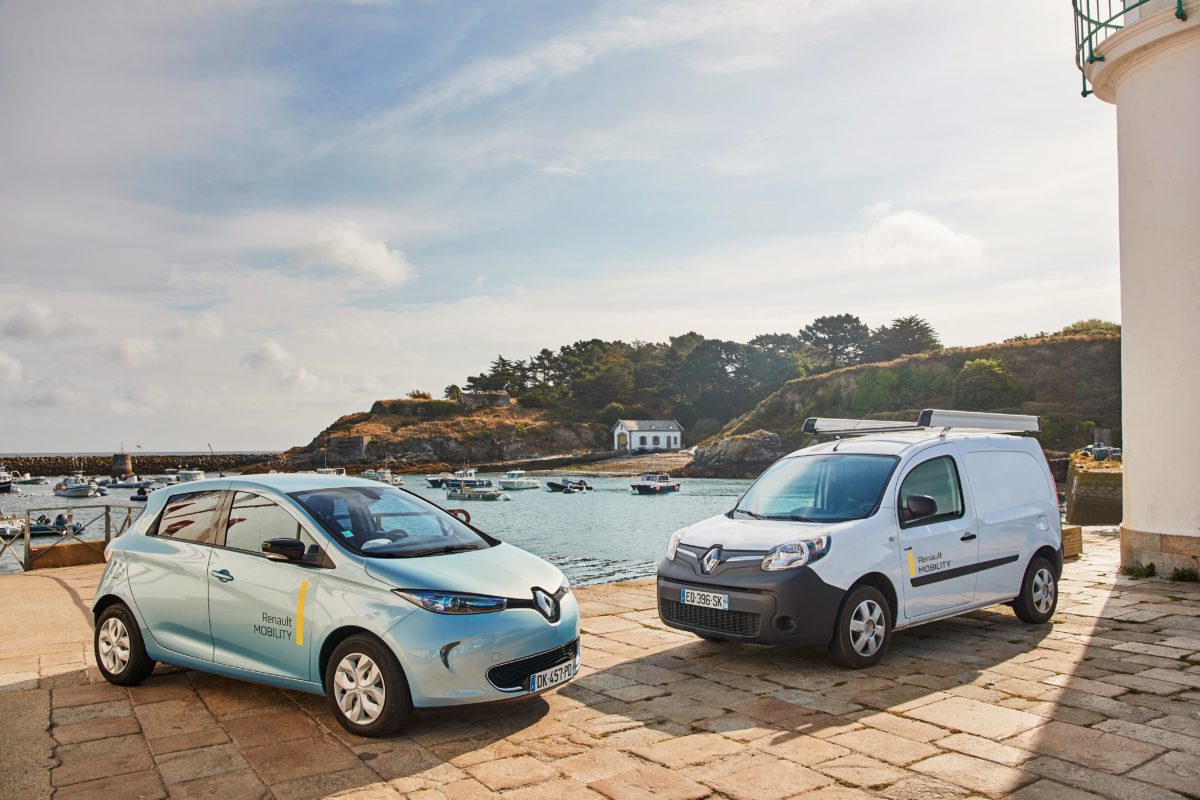Renault will introduce a smart charging network to the French island of Belle-Île-en-Mer, just off the coast of southern Brittany. The French car giant – with partners Morbihan Energies, Les Cars Bleus and Enedis – says it will develop a “smart electric ecosystem”.
A fleet of Renault ZOE and Kangoo Z.E. models will be deployed on the island from next year on a car-share basis, and can be used by anyone and charged at public charging stations.
The project partners say the public charging points will use excess energy from rooftop PV systems on public buildings, offering increased self-consumption on the island.
Renault also plans to deploy a second-life EV battery solution for the island’s largest holiday bungalow complex. Until now, the bungalows were connected to an expensive central heating system, shortening the profitable holiday season. Through the use of second-life EV batteries, mainly to heat the bungalows, the complex owners hope to extend the season.
Belle-Île-en-Mer occupies 84km2 and is home to around 5,000 citizens, though during the summer months tourist activity raises the number of people on the island to around 30,000.
‘Smart charging stations will transform grids'
In February, Renault deployed a similar project on the Portuguese island of Porto Santo, part of the Madeira archipelago. That project has three main aspects; the deployment of a car-sharing service with EVs – whereby the vehicles are participating in a smart charging network, to balance loads and improve grid resilience – a second vehicle-to-grid phase to compensate for peak demand; and the use of second-life EV batteries as stationary storage systems for the island's commercial buildings.
The competition between car manufacturers to develop viable solutions to meet the needs of tomorrow's energy system has picked up pace recently. Reports suggest the market for second-life EV batteries could be worth $4.2 billion by 2025. As manufacturers are required to dispose of EV batteries, extending their operational life through stationary storage applications could significantly postpone the date by which a manufacturer has to spend money on their disposal. Additionally, using them as storage opens another revenue stream.
A case study published this year, speculated a supplier of reserve capacity through a multi-megawatt storage system could earn around £50,000 ($65,000) per MW, per year. A 100 MW plant comprising 7,000 Nissan Leaf EV batteries would generate annual revenue of $6.7 million based on the same model, translating to $965/battery/year. From an expected rest life-cycle of five years, each battery would yield $4,825.
Likewise, smart charging is creating ripples. German smart charging company The Mobility House – Renault’s partner of choice for the project in Porto Santo – believes the large-scale deployment of EVs in conjunction with smart charging will fundamentally transform grids.
In an interview with pv magazine, Mobility House founder and CEO Thomas Raffeiner said: “The car communicates with the operation system, informing it that its battery is at 30% and needs to be charged. Maybe the car next to it is 100% charged and doesn’t need to be charged any more at that moment. Our technology enables us to charge sun-to-vehicle, vehicle to vehicle, or vehicle to grid. So at any time, we make sure to get the most valuable charging options out of the building, from the other vehicles, from the sun, or from the grid. We are moving towards a very smart, decentralized world.”
This content is protected by copyright and may not be reused. If you want to cooperate with us and would like to reuse some of our content, please contact: editors@pv-magazine.com.




1 comment
By submitting this form you agree to pv magazine using your data for the purposes of publishing your comment.
Your personal data will only be disclosed or otherwise transmitted to third parties for the purposes of spam filtering or if this is necessary for technical maintenance of the website. Any other transfer to third parties will not take place unless this is justified on the basis of applicable data protection regulations or if pv magazine is legally obliged to do so.
You may revoke this consent at any time with effect for the future, in which case your personal data will be deleted immediately. Otherwise, your data will be deleted if pv magazine has processed your request or the purpose of data storage is fulfilled.
Further information on data privacy can be found in our Data Protection Policy.